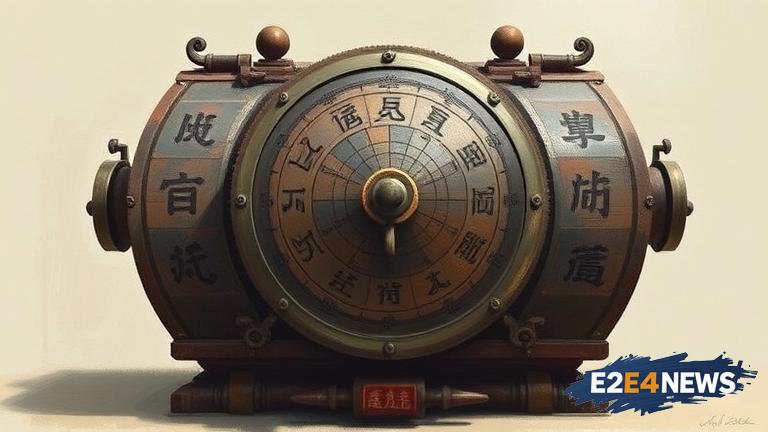The recreation of the 2000-year-old Chinese earthquake sensor, known as the Houfeng Didong Yi, has sent shockwaves of excitement throughout the scientific community. This ancient device, created during the Han Dynasty, was said to detect seismic activity and provide early warnings for earthquakes. By studying the original design and mechanism, researchers have been able to recreate the sensor, providing valuable insights into the ingenuity and innovation of ancient Chinese scientists. The Houfeng Didong Yi was first described in historical records as a large, bronze vessel with a series of intricate mechanisms and levers. When an earthquake occurred, the device would trigger a series of movements, ultimately releasing a ball into a designated container, signaling the detection of seismic activity. The recreation of this device has not only demonstrated the advanced understanding of seismology held by ancient Chinese scientists but also highlighted the importance of preserving and studying historical innovations. By analyzing the design and functionality of the Houfeng Didong Yi, researchers have gained a deeper understanding of the principles behind earthquake detection and the potential applications of this technology in modern seismology. The successful recreation of this ancient device has sparked widespread interest and admiration for the ingenuity and creativity of ancient Chinese innovators. Furthermore, this achievement has significant implications for the field of seismology, as it demonstrates the potential for ancient technologies to inform and improve modern earthquake detection methods. The study of ancient innovations, such as the Houfeng Didong Yi, can provide valuable insights into the development of new technologies and the improvement of existing ones. In addition, the recreation of this device has highlighted the importance of interdisciplinary collaboration, as researchers from various fields, including history, archaeology, and engineering, have come together to study and recreate the Houfeng Didong Yi. The success of this project has also underscored the value of preserving and studying historical artifacts, as they can provide a unique window into the past and offer valuable lessons for the present and future. As scientists continue to study and learn from the Houfeng Didong Yi, it is likely that this ancient innovation will have a lasting impact on the field of seismology and beyond. The recreation of the Houfeng Didong Yi has also sparked interest in the history of ancient Chinese science and technology, with many researchers and historians seeking to learn more about the innovations and discoveries of this fascinating period. Moreover, the study of ancient Chinese seismology has significant implications for our understanding of the development of science and technology in ancient civilizations. By examining the achievements and innovations of ancient Chinese scientists, researchers can gain a deeper understanding of the cultural, social, and historical context in which these discoveries were made. The Houfeng Didong Yi is just one example of the many innovative devices and technologies developed in ancient China, and its recreation has highlighted the importance of continued research and study into this fascinating period. As our understanding of ancient Chinese science and technology continues to grow, it is likely that we will uncover many more exciting innovations and discoveries that will shed new light on the history of science and technology. The recreation of the Houfeng Didong Yi has also demonstrated the potential for ancient technologies to be reimagined and reinterpreted in modern contexts, highlighting the value of preserving and studying historical innovations. In conclusion, the successful recreation of the 2000-year-old Chinese earthquake sensor has provided a unique glimpse into the ingenuity and innovation of ancient Chinese scientists, while also highlighting the importance of preserving and studying historical artifacts and innovations. As researchers continue to study and learn from the Houfeng Didong Yi, it is likely that this ancient device will have a lasting impact on the field of seismology and beyond.
